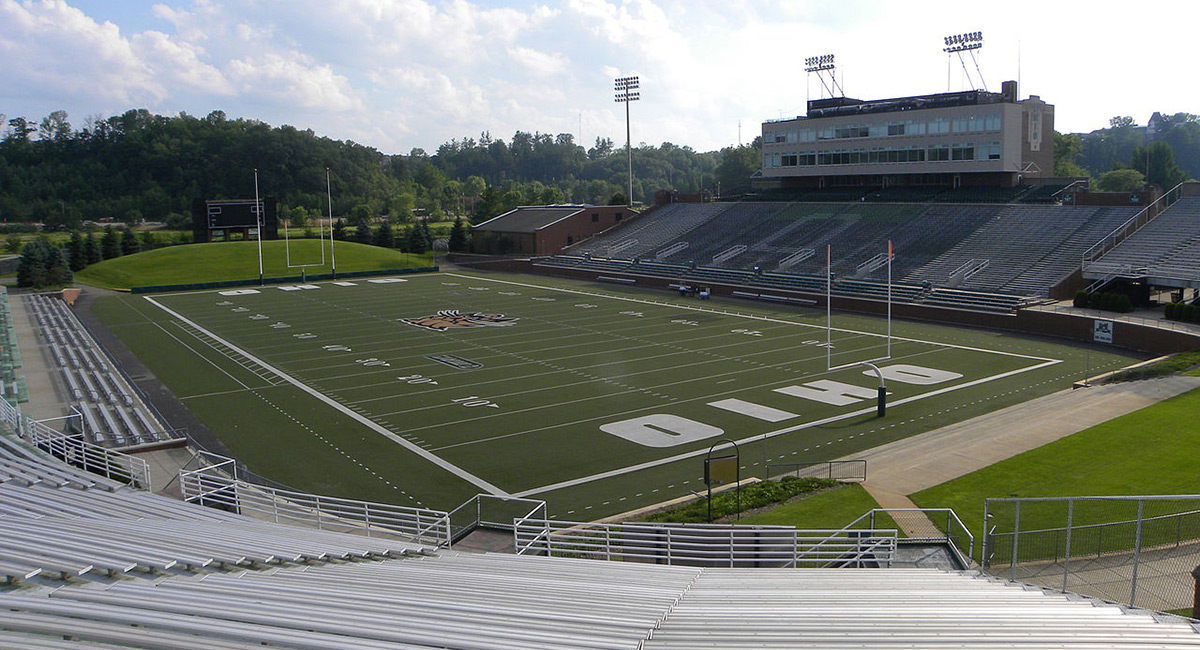Major newspapers like the New York Times and Washington Post are writing stories about how Covid-19 is devastating universities and towns surrounding them, particularly in Flyover Country, that part of America located away from the Atlantic or Pacific Coasts where media, business and political elites too often think most of the great minds and wisdom of our nation are found. The Times, for example, recently focused on the University of Akron, and Ohio University, where I reside. Let me speak briefly about three universities in the Buckeye State, including those two.
These schools are getting clobbered financially. Enrollments have been falling for years, so the schools were already in tenuous financial shape before Covid-19. The University of Akron in 1989 had 28,967 students; 30 years later, in fall 2019, it had 17,743, 38.7% fewer. What this fall: maybe 15,000? Moreover, early in this century, Akron went on a huge building splurge including a large fancy stadium, unsuccessfully hoping to attract students, but instead incurring a huge debt burden. Complicating things, another large state school, Kent State, is but 13 miles (16 minutes) away.
As Inside Higher Ed put it, Akron recently had a “bloodbath.” It fired 97 full-time professors, some tenured, after another 21 had already resigned or retired. This continued a major program retrenchment begun in 2018. Whole disciplines are being decimated, no doubt ending several majors. Meanwhile, of course, the school still subsidizes intercollegiate sports with more than $20 million annually, justly infuriating the faculty.
Conference rival Ohio University (OU) is the oldest Midwest university, with a gorgeous campus including 200-year-old buildings. Reeking in tradition, it inspired David McCullough’s recent best seller, The Pioneers, and is the school where Lyndon Johnson proclaimed his Great Society. A selective admission school with a decent-sized (by state school standards) endowment, OU over the past decade ignored the basics (maintaining high academic standards), lowering entrance requirements to maximize enrollments, while emphasizing political correctness regarding things like sustainability and diversity. A flight to quality in higher ed hurt schools like Ohio University that lowered high academic standards. Huge budget woes have forced it to let roughly 400 staff go, including a good number of faculty, vast numbers of supporting workers, but absolutely no, to my knowledge, high priced administrators, nor have any sizable cuts come to the $20 million plus athletics subsidy required so OU can compete annually in the Last Resort Bowl or its equivalent.
Wright State University in Dayton has had the most perilous decade of all. A new university, founded only in 1967, it grew substantially and by 2011 had 18,275 students; in fall 2019, the number had declined by 32% to 12,423, Wracked by internal dissent, in February 2019 the faculty went on a 20-day strike severely hurting the institution. Its finances have been extremely precarious. Founded originally as a branch of both Ohio State and Miami Universities, both schools are within about an hour’s drive of the Wright campus, as is the University of Cincinnati. Do you need four major public universities within an hour of Dayton, a city with fewer residents than 100 years ago, which also has a fine private school (University of Dayton) as well as a large community college (Sinclair)?
My guess is something important will happen regarding minimally one of these colleges. Ohio University, academically the highest quality, better endowed, and more geographically isolated from competing institutions, will likely survive, possibly even flourish if it renews its previous emphasis on excellence. Wright State is extremely vulnerable to merger into one or more surrounding institutions. Some sort of merger or increased cooperation between Akron and Kent State also seems likely. Some observers go further, predicting remote learning and alternatives to traditional degrees (like coding academies) may doom most vulnerable American universities.
Ohio is probably fairly typical. The short term prognosis is: Highly unpredictable, but with falling enrollments, rising expenses (money for masks, testing, etc.), loss of athletic revenue, declining state subsidies, falling endowment income and donor grants, half-filled dorm rooms, declining international enrollments, etc.—very bad financial outlooks, even for elite schools suffering smaller enrollment loss. Some low-cost community colleges, however, may actually gain enrollments. But Covid-19 will kill off some schools.












